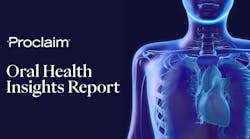North Virgina residents struggle to get dental care
ALEXANDRIA, VA – The first-ever survey of Northern Virginia’s oral health reveals that lower-income families are at a distinct disadvantage when it comes to getting the oral health care services they need. The survey report, released by the Northern Virginia Health Foundation, calls on the community to address the region’s oral health needs by taking steps to improve oral health care access, especially for lower-income families.
Based on a poll of 1,300 North Virginian adults, the survey found that while nearly all (91%) higher-income adults reported seeing a dentist in the last two years, fewer than two-thirds (63%) of lower-income adults said they saw a dentist within the past two years. Cost was the main barrier to getting dental care. Seventy-three percent of lower-income households (defined as those with an annual income below $40,000) did not have dental insurance, and two-thirds of this population said they could not afford dental insurance. Sixty-six percent of lower-income adults said they could not afford to see a dentist.
“For people with limiped means and no insurance, routine dental care is often out of reach,” said Northern Virginia Health Foundation President, Patricia Mathews. “Because of costs, they are more likely to suffer severe pain from untreated dental problems, miss time from work or school, or wind up in a hospital emergency room, which increases health care costs for everyone.”
The report focuses primarily on the oral health status of lower-income adults because there are so few programs to assist them. Medicaid covers very little in the way of dental care for adults in Virginia, and only a patchwork of programs and services exists to meet the oral health needs of low-income adults.
The survey assessed numerous factors affecting the oral health of Northern Virginians, gauging their perceptions of oral health as well as documenting obstacles to oral health care. The results demonstrate that far higher percentages of lower-income residents suffer from dental problems, impacting both their health and their jobs, than do residents with higher incomes.
Among the key findings:
Adult dental care — 16% of lower-income adults have not seen a dentist in more than five years, compared to only 3% of higher-income adults. Lower-income residents were also more likely than higher-income earners to put off needed dental care treatment due to cost.
Dental insurance — Among those who do have health insurance, only a quarter (24%) have coverage that includes dental care. For higher-income adults, the percentage with dental coverage is 64%.
Need — Lower-income adults were five times more likely than higher-income adults (26% versus 6%) to say they needed to have a tooth pulled. Poorer residents were more likely to lose their teeth and five times more likely to report needing or wearing dentures. Twenty percent of low-income people had dentures, compared to 4% of higher-income people.
Emergency care — Lower-income residents who have received care in the last two years sought care for acute dental problems in a hospital emergency room.
Barriers beyond cost and insurance — In addition to cost and lack of dental coverage, lower-income adults cited several reasons that kept them from getting dental care. For example, 15% said they lacked transportation to get to a dentist, a rate nearly four times greater than that of higher-income residents. And 10% of lower-income earners said they needed child care in order to see a dentist, compared to 5% of higher-income earners.
Children — 45% of lower-income parents whose children haven’t received recent care said they couldn’t afford dentist visits for their children. Lower-income parents were more likely to report that only some of their children had seen a dentist in the last two years (16% versus 7% of higher-income parents). Among those parents surveyed whose children have not received care recently, 52% of lower-income parents said they only seek dental care for their children in an emergency, compared to 21% of higher-income parents.
“Too many Northern Virginians are not getting the oral health care they need,” said Mathews. “We hope that an array of Northern Virginia stakeholders — dentists, policymakers, safety net clinics. and other nonprofit organizations — will make improving oral health care access a priority so that more residents, especially those with lower incomes, can get oral health care when they need it.”
To ensure good oral health for all Northern Virginians, the Foundation recommends local and regional efforts that:
- Reinforce the link between oral and overall health among health professionals and the general public. Increasing understanding of this link is important for the oral and overall health of all populations, and in particular for pregnant women.
- Foster integration of oral and primary care. Several safety net clinics in Northern Virginia provide integrated primary, oral and behavioral health care; new models of integration should be explored.
- Increase the number of providers who offer a dental home.
At the state level, policymakers should:
- Include comprehensive dental services for all who are Medicaid-eligible. Currently, Medicaid only covers emergency extractions for adults.
- Work to ensure that reimbursement for dental services through Medicaid is at least at the 65th percentile of the American Dental Association rate survey. Reimbursing dental services for Medicaid-eligible patients at a higher rate could increase the number of providers willing to see patients.
For a full copy of the report, Oral Health in Northern Virginia, go to www.novahealthfdn.org.
For other news about lack of dental care, click here.
To comment on this article, go to community.pennwelldentalgroup.com/.

